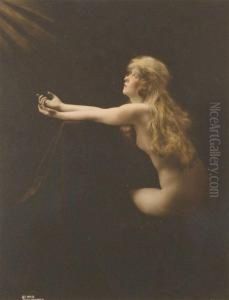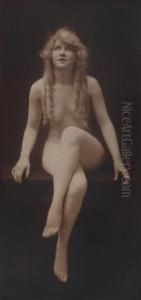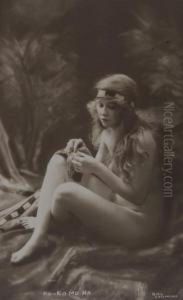Charles Wesley Gilhousen Paintings
Charles Wesley Gilhousen was an American photographer known for his pictorial photography during the late 19th and early 20th centuries. Born in 1867 in Keokuk, Iowa, Gilhousen developed an interest in photography at a young age. His work is characterized by a soft-focus style and often features allegorical and bucolic themes, which were popular in the pictorialist movement of the time.
Gilhousen's photographs often depicted idyllic landscapes, pastoral scenes, and classical figures, demonstrating the influence of Romanticism and the Arts and Crafts Movement. His approach to photography was more aligned with the fine arts, as he emphasized beauty, tonality, and composition, aligning himself with the pictorialist goal of elevating photography to the status of fine art.
Throughout his career, Gilhousen's work was exhibited in various photography salons and exhibitions, gaining him a degree of recognition among his peers. However, he did not achieve the same level of fame as some of his contemporaries, such as Alfred Stieglitz or Edward Steichen, who were pivotal figures in the pictorialist movement and instrumental in establishing photography as a recognized art form.
Despite his relative obscurity, Gilhousen's photographs remain appreciated by collectors and historians for their technical skill and artistic beauty. His contributions to the field of photography, particularly within the pictorialist genre, have secured him a place in the history of American art photography. Charles Wesley Gilhousen passed away in 1930, leaving behind a body of work that continues to be studied and admired for its aesthetic value and historical significance.


